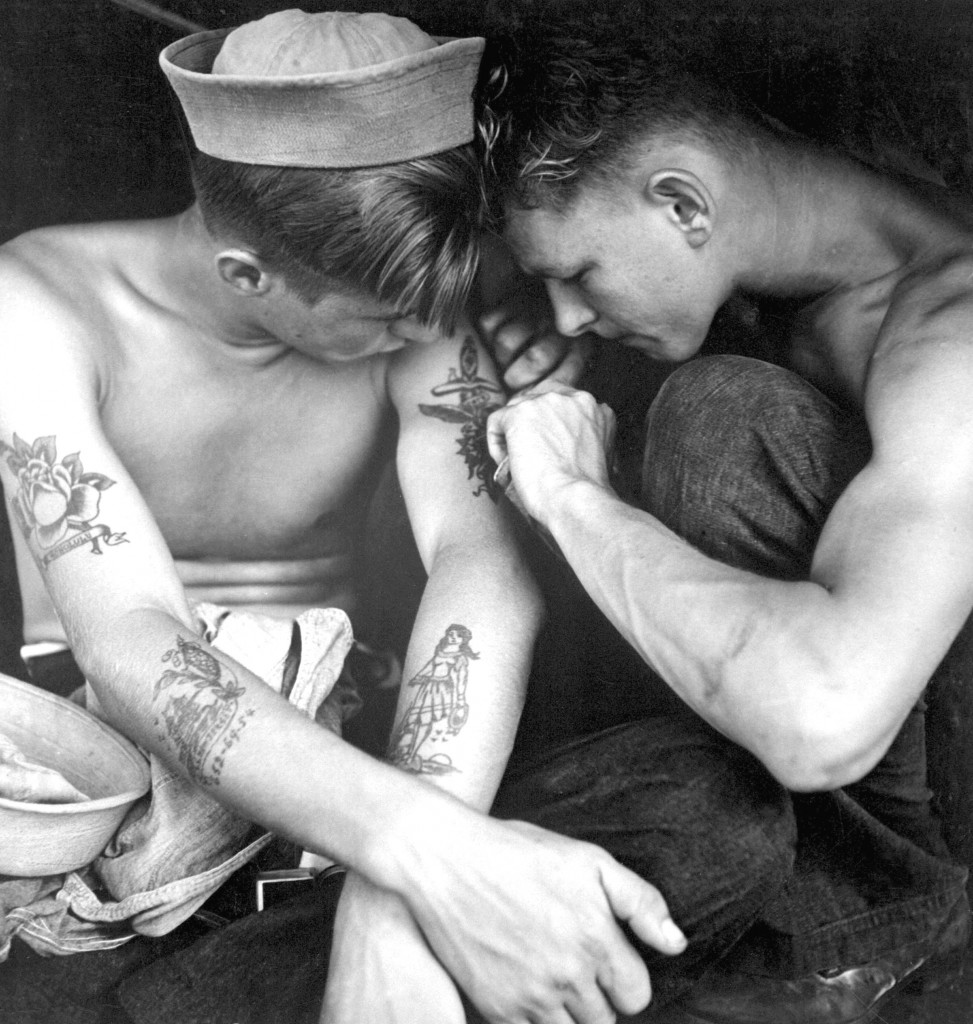Sailors & Ink

Adding to the collection aboard the USS New Jersey(BB-62), December 1944. Photo courtesy of the National Archives.
Sailors & Ink
The ink on sailors’ bodies is as telling as the pages of a scrapbook. The association of sailors with tattoos presumably originated with the British Royal Navy in the 18th century as it sailed throughout the South Pacific. After “discovering” the tattoos and tribal markings of the native people of Polynesia and other Pacific islands, the naval tradition was born.
Serving as souvenirs of travels abroad, some motifs were more common than others, such as ropes, stars, or mermaids. Many typically nautical tattoos had to be earned, worn as a badge of merit and accomplishment. A golden dragon, for example, could be worn once a sailor had crossed the International Date Line, while an anchor represented having crossed the Atlantic Ocean. To wear such tattoos without having earned them would be a grave mistake for a new sailor among old salts.
Other images were superstitious. Swallows—tattoos of which were earned by logging 5,000 miles at sea—are known for returning safely to their homes and were therefore seen as good luck to seafarers. Turtles or images of King Neptune were earned once a seaman had crossed the Equator. Some men would have pigs, roosters, or other aquaphobic animals tattooed on their bodies with the idea that if thrown overboard, the water-fearing animal would seek out dry land quickly and thereby lead the sailor to safety. Christian crosses were placed on the bottom of feet to ward off sharks, and the words “Hold Fast” across the knuckles as a reminder to hold tight to the ropes. Five-pointed nautical stars were meant to prevent getting lost at sea.
This post by National WWII Museum Curator Meg Roussel.
- Posted :
- Post Category :
- Tags :
- Follow responses to this entry through the RSS 2.0 feed. You can skip to the end and leave a response. Pinging is currently not allowed.




Leave a Reply